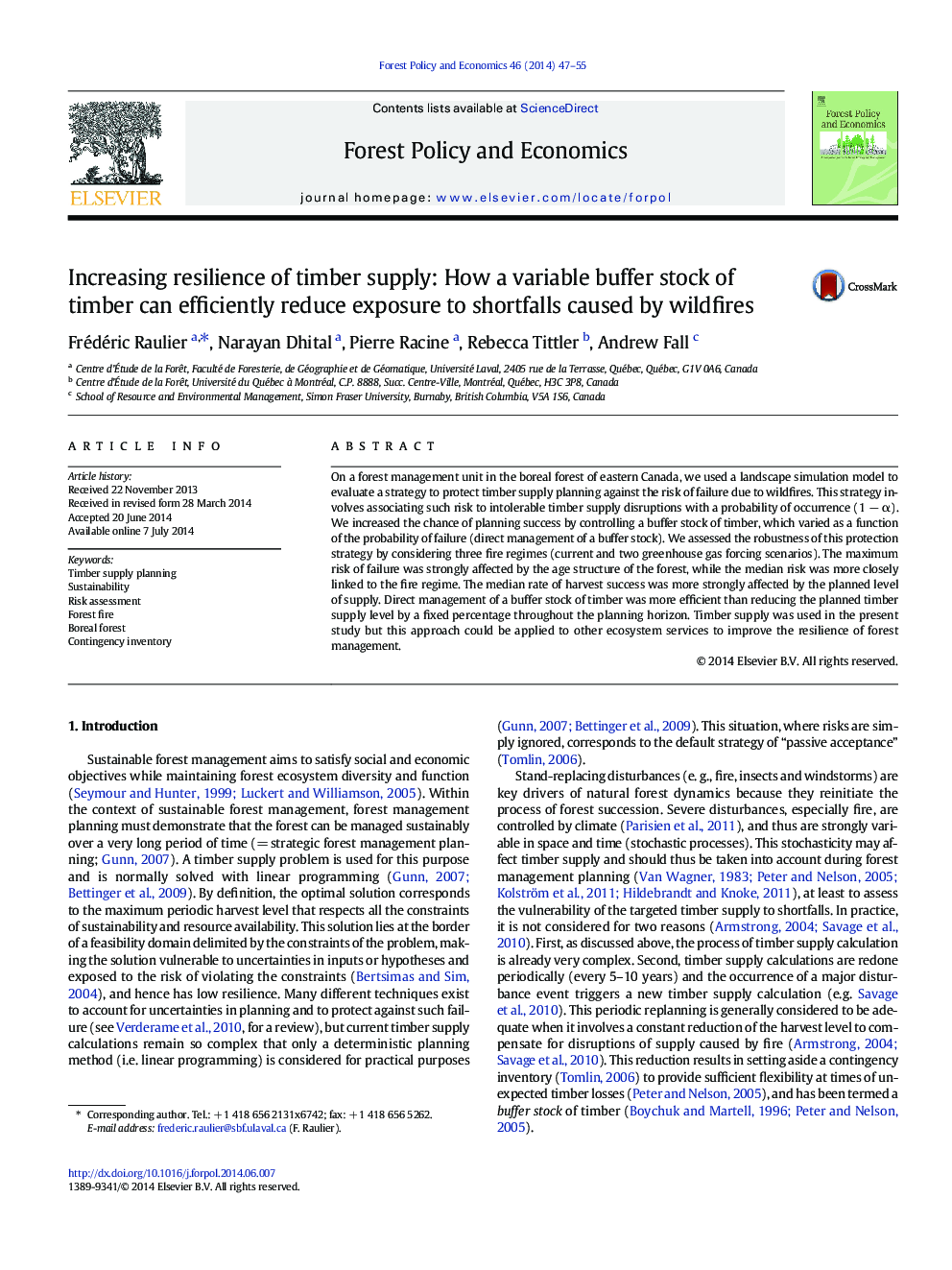| Article ID | Journal | Published Year | Pages | File Type |
|---|---|---|---|---|
| 91495 | Forest Policy and Economics | 2014 | 9 Pages |
•We model the use of buffer stocks to protect timber supply against disruptions.•A variable buffer is more efficient than a set one due to variable risk.•The size of the variable buffer should be based on changing risk.•Buffering against the current fire regime may help adapt to future changes.•Our approach is applicable to other essential elements of forest management.
On a forest management unit in the boreal forest of eastern Canada, we used a landscape simulation model to evaluate a strategy to protect timber supply planning against the risk of failure due to wildfires. This strategy involves associating such risk to intolerable timber supply disruptions with a probability of occurrence (1 − α). We increased the chance of planning success by controlling a buffer stock of timber, which varied as a function of the probability of failure (direct management of a buffer stock). We assessed the robustness of this protection strategy by considering three fire regimes (current and two greenhouse gas forcing scenarios). The maximum risk of failure was strongly affected by the age structure of the forest, while the median risk was more closely linked to the fire regime. The median rate of harvest success was more strongly affected by the planned level of supply. Direct management of a buffer stock of timber was more efficient than reducing the planned timber supply level by a fixed percentage throughout the planning horizon. Timber supply was used in the present study but this approach could be applied to other ecosystem services to improve the resilience of forest management.
